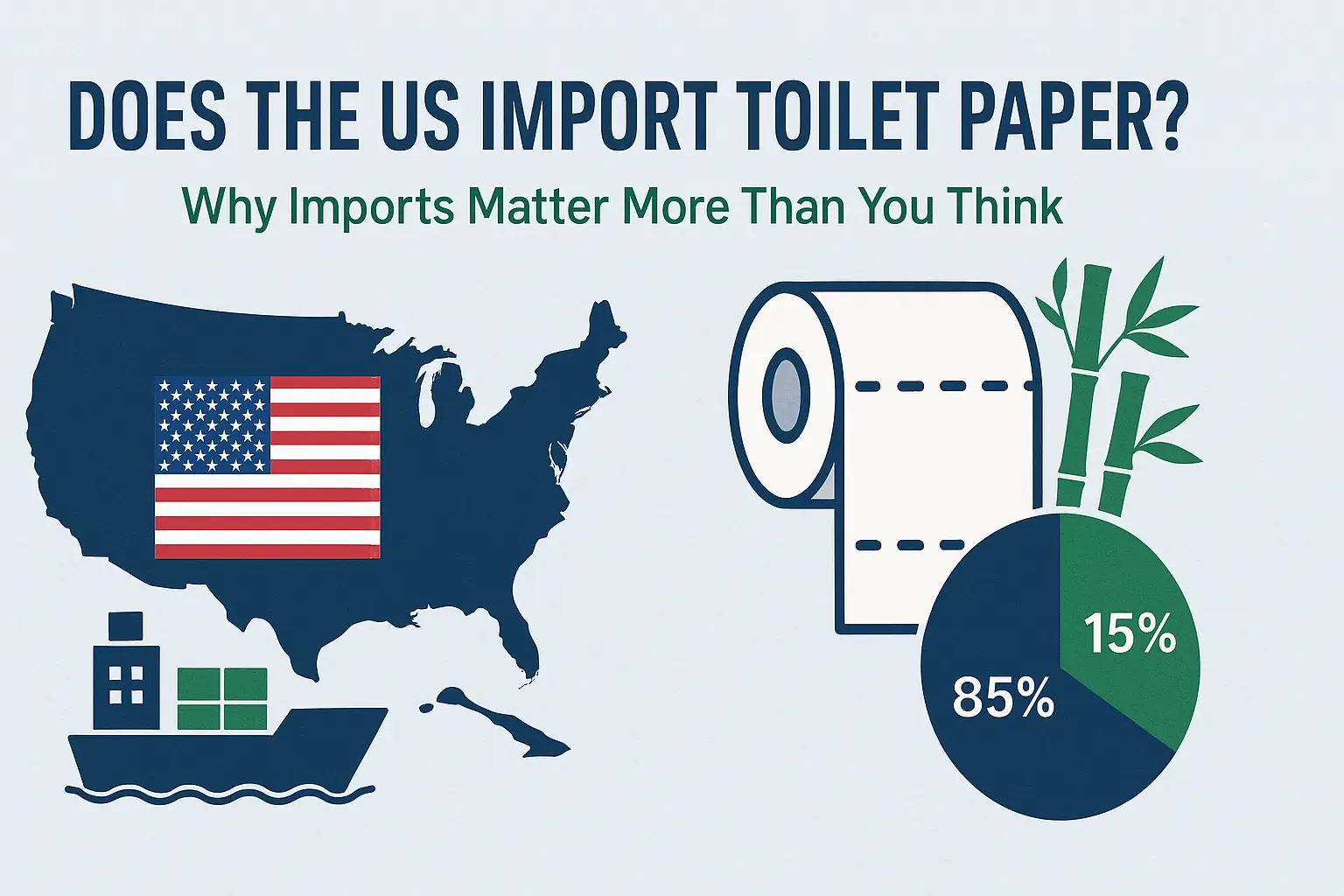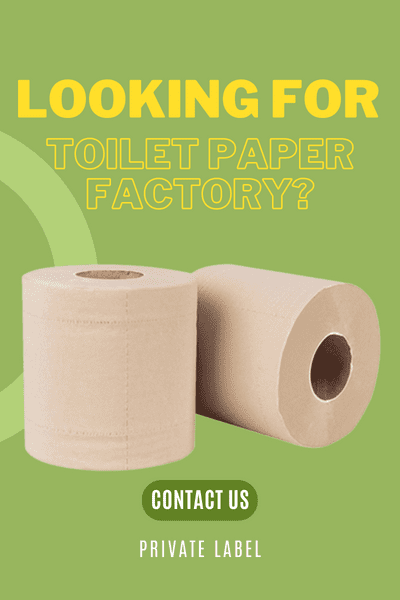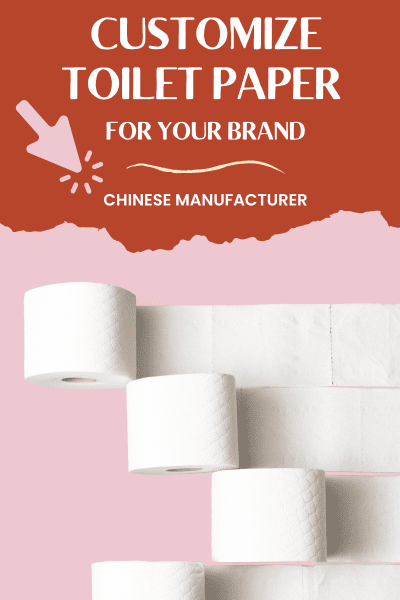
You might be surprised to learn that the US imports toilet paper, even though most of the supply is produced domestically. Companies rely on imports to fill gaps in demand and ensure a steady supply. Countries like Canada, China, and Mexico serve as key sources. This strategy helps balance production costs and meet consumer preferences. While domestic production dominates, the role of imports keeps the market flexible and responsive to your needs.
Key Takeaways
The US makes about 85% of its own toilet paper.
Countries like Canada, China, and Mexico send extra or special kinds.
About 15% of toilet paper in the US is imported.
Imports are important during high demand or supply problems.
Trade rules and taxes affect the price and supply of imports.
Having many sources helps keep toilet paper available during problems.
The US Toilet Paper Market

Domestic production and its dominance
You might not realize it, but most of the toilet paper you use is made right here in the United States. Domestic producers supply nearly 85% of the tissue paper demand, which includes toilet paper. This dominance stems from the country’s robust manufacturing infrastructure and government support for the pulp and paper industry. Companies like Charmin, Kimberly-Clark, and Procter & Gamble lead the market, ensuring that production meets the high consumption levels of American households. Nearly 90% of the toilet paper purchased by consumers is produced domestically, highlighting the strength of local manufacturing.
Role of imports in meeting demand
While domestic production is strong, imports play a vital role in filling gaps and meeting specific consumer needs. The US Import of toilet paper supplements domestic supply, especially during periods of high demand or supply chain disruptions. Countries like Canada, Mexico, and China provide additional products, ensuring that shelves remain stocked. Imports also allow access to specialty items, such as ultra-soft or eco-friendly toilet paper, which may not be widely produced domestically. This balance between local production and imports keeps the market flexible and responsive to consumer preferences.
Key consumption and production statistics
The United States leads the world in toilet paper consumption, with the average American using about 141 rolls per year. This accounts for approximately 20% of global toilet roll consumption, despite the country representing only 4% of the global population. The toilet paper market is projected to reach USD 74.95 billion by 2033, driven by strong demand in North America. A closer look at global statistics reveals that Americans consume more toilet paper per person than residents of Germany or the United Kingdom. The production capabilities in North America, supported by technological innovations and sustainability efforts, ensure that the region remains a key player in the global market.
US Import Sources for Toilet Paper
Major countries supplying toilet paper to the US
The United States sources toilet paper from several countries to meet its demand. Canada stands out as a key supplier due to its proximity and strong trade relationship with the US. Other major contributors include China, Germany, and Mexico. These countries provide a mix of standard and specialty toilet paper products.
To give you a clearer picture, here’s a table showing some of the top suppliers based on recent trade data:
Country | Quantity (Kg) | |
|---|---|---|
United States | 366,298.55 | 192,909,000 |
Germany | 269,545.36 | 168,421,000 |
European Union | 214,613.32 | 112,843,000 |
Netherlands | 174,171.66 | 108,840,000 |
France | 159,232.20 | N/A |
This data highlights the significant role of international trade in ensuring a steady supply of toilet paper for American consumers.
Percentage of imports versus domestic production
Although domestic production dominates the market, imports still play a crucial role. Around 15% of the toilet paper consumed in the US comes from imports. This percentage might seem small, but it becomes vital during periods of high demand or supply chain disruptions. Imports ensure that you have access to a variety of products, including eco-friendly and premium options that may not be widely produced domestically.
The following chart illustrates the contribution of imports from various countries:
Trade agreements influencing imports
Trade policies and agreements significantly impact the flow of toilet paper imports into the US. For instance, tariffs introduced under the Trump administration imposed a 10% universal tariff on imports, with even higher rates for countries like China. These tariffs, which can reach up to 57%, have made imports from China less competitive. As a result, the US has shifted toward sourcing more toilet paper from countries with lower tariffs, such as Canada and Latin American nations.
This shift demonstrates how trade agreements and policies shape the availability and pricing of imported toilet paper. By understanding these dynamics, you can better appreciate the complexities of the global supply chain that ensures your household essentials remain accessible.
Why the US Imports Toilet Paper
Cost benefits of importing
Importing toilet paper offers significant cost advantages. Products from countries like China are often more affordable due to lower labor costs and fewer regulations. These savings allow companies to provide competitively priced options to consumers. Additionally, imported toilet paper often comes in sizes and designs that appeal to American preferences, ensuring it meets your expectations. By leveraging these cost benefits, the US Import of toilet paper helps maintain a balance between affordability and quality for consumers.
Access to specialty or high-quality products
Imports also provide access to unique and high-quality toilet paper products that may not be widely available in the US. For example, bamboo toilet paper has gained popularity for its sustainability. Bamboo grows quickly, requires less water, and uses less energy during production compared to traditional wood-based products. This makes it an environmentally friendly choice. Many consumers prioritize sustainability, so options like bamboo and recycled toilet paper align with these values. Imported specialty products also cater to premium preferences, offering biodegradable and eco-friendly alternatives that reduce environmental impact. These options ensure you have access to a variety of products that meet both practical and ethical needs.
Supply chain and logistical considerations
The global supply chain plays a crucial role in ensuring a steady supply of toilet paper. Importing from multiple countries helps diversify sources, reducing the risk of shortages during disruptions. For instance, Canada’s proximity to the US allows for faster and more reliable deliveries. Countries like China and Mexico also contribute to the supply chain by offering affordable and high-quality products. This logistical flexibility ensures that shelves remain stocked, even during periods of high demand. By importing toilet paper, the US can maintain a resilient supply chain that adapts to changing market conditions and consumer needs.
Implications of US Importing Toilet Paper
Impact on consumer pricing
Toilet paper imports directly influence the prices you pay at the store. For example, the US imported 2 million tons of Canadian northern bleached softwood kraft pulp (NBSK) last year. This material is essential for producing toilet paper. However, proposed tariffs on Canadian lumber could reduce the supply of this pulp. A decrease in supply often leads to higher production costs, which manufacturers pass on to consumers. This means you might see price increases or even shortages if tariffs disrupt the flow of raw materials. The balance between domestic production and imports helps stabilize pricing, but changes in trade policies can quickly shift this dynamic.
Availability during supply chain disruptions
Imports play a critical role in ensuring toilet paper remains available during supply chain disruptions. Dr. Ronalds Gonzalez highlights how panic buying during the COVID-19 pandemic caused rapid stock depletion. Even though US manufacturing facilities operated at full capacity, the sudden surge in demand led to significant shortages. Additionally, events like port strikes can delay shipments of essential raw materials, such as eucalyptus pulp, further straining the supply chain. By diversifying import sources, the US mitigates risks and ensures that you have access to toilet paper, even during unexpected disruptions.
Lessons from past shortages and supply chain resilience
The Great Toilet Paper Shortage revealed several weaknesses in supply chain management. Hoarding behavior inflated demand, while retailers and manufacturers struggled to manage sudden surges. To prevent future shortages, companies have learned to improve demand forecasting and inventory management. Diversifying sourcing and increasing supply chain visibility are also key strategies. For example, relying on both domestic production and imports fosters resilience by reducing dependence on a single source. These lessons ensure that the supply chain remains robust, so you can avoid the frustration of empty shelves during times of crisis.
The US imports toilet paper to meet demand and offer you more choices, but domestic production remains the backbone of the market. Imports from Canada, China, and Mexico provide cost-effective and high-quality options, ensuring shelves stay stocked.
Domestic production ensures stability, while imports add flexibility.
Maintaining a resilient supply chain protects against disruptions and keeps products accessible. By balancing local manufacturing with imports, the US ensures you have reliable access to this essential item, even during unexpected challenges.
FAQ
-
Why does the US rely on imports if it produces most of its toilet paper?
Imports help fill gaps in supply during high demand or disruptions. They also provide access to specialty products like bamboo or eco-friendly toilet paper. This ensures you have a variety of options while maintaining a steady supply.
-
Why is Canada a major supplier of toilet paper to the US?
Canada’s proximity to the US makes transportation faster and more cost-effective. The country also has abundant natural resources, like softwood pulp, which is essential for making toilet paper. This strong trade relationship benefits both countries.
-
Why did toilet paper shortages happen during the COVID-19 pandemic?
Panic buying caused demand to spike suddenly, depleting store shelves. Even though US manufacturers operated at full capacity, supply chains struggled to keep up. Imports helped alleviate shortages, but the crisis highlighted the need for better supply chain resilience.
-
Why are tariffs important in the toilet paper trade?
Tariffs impact the cost of imported toilet paper. Higher tariffs make imports more expensive, which can lead to higher prices for you. Trade agreements with countries like Canada help reduce tariffs, ensuring affordable and steady supplies.
-
Why is bamboo toilet paper often imported?
Bamboo grows quickly and requires fewer resources than traditional wood. Many countries, especially in Asia, specialize in producing bamboo toilet paper. Importing these products gives you access to sustainable and eco-friendly options not widely made in the US.




